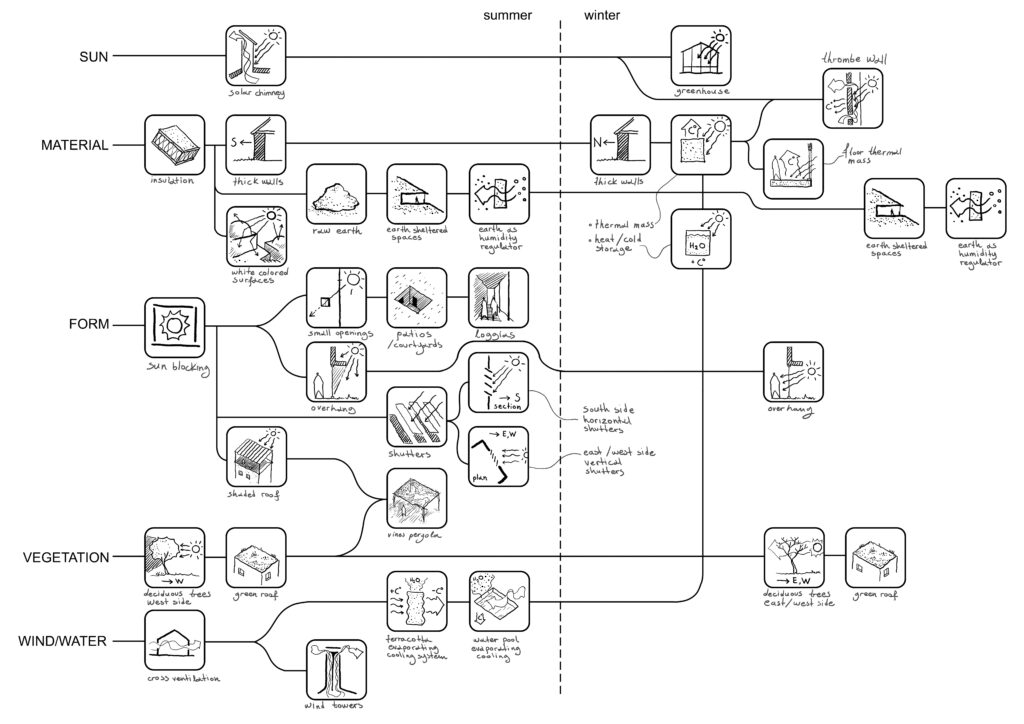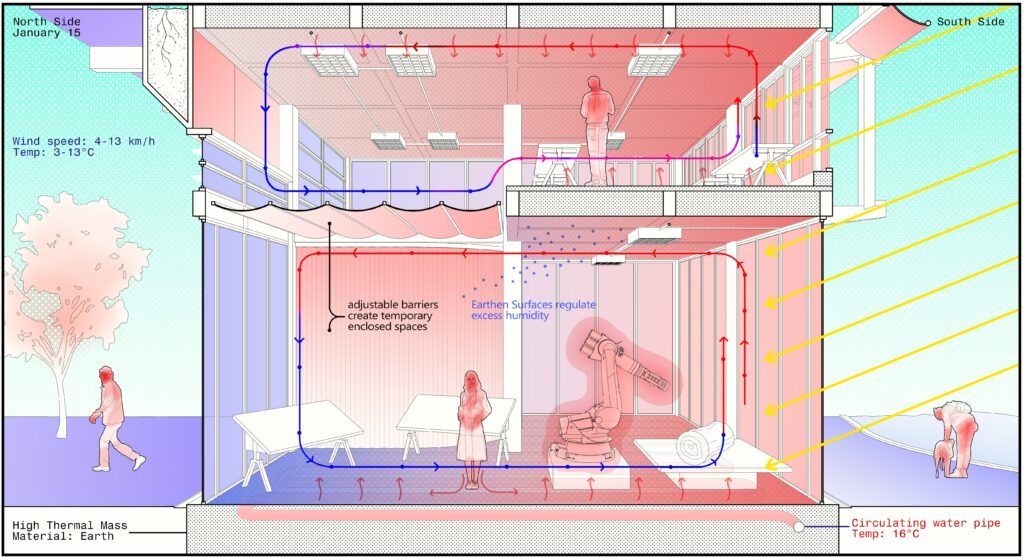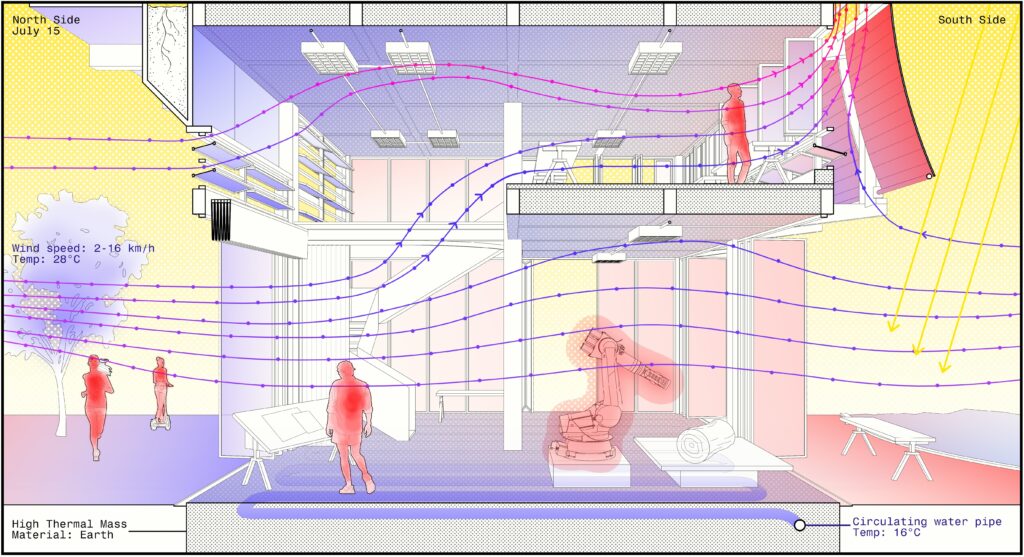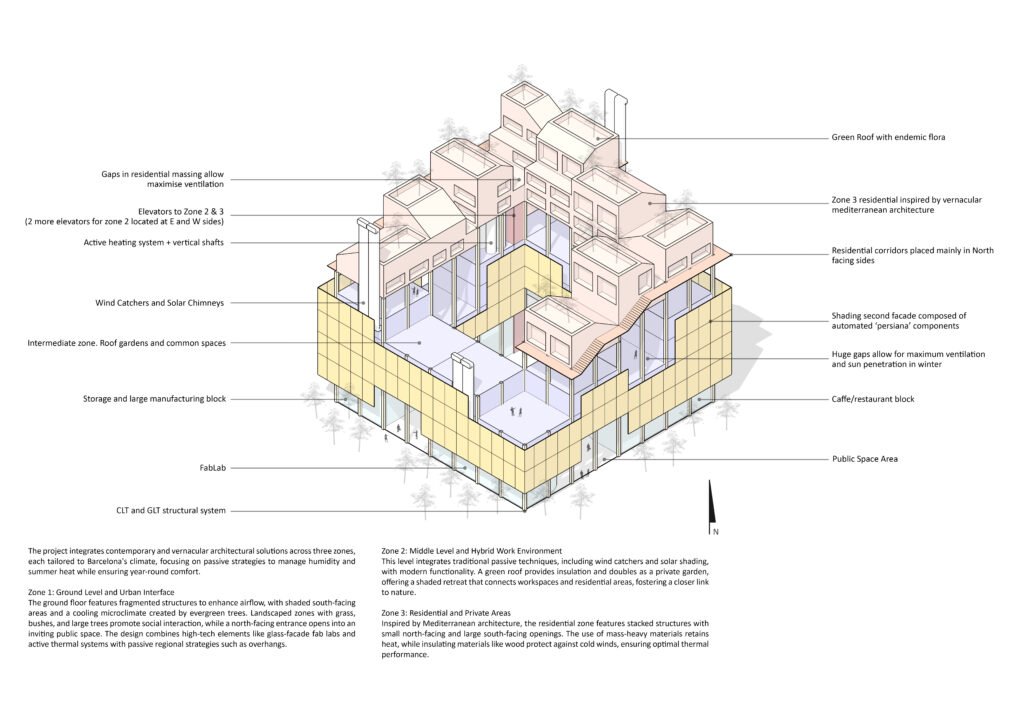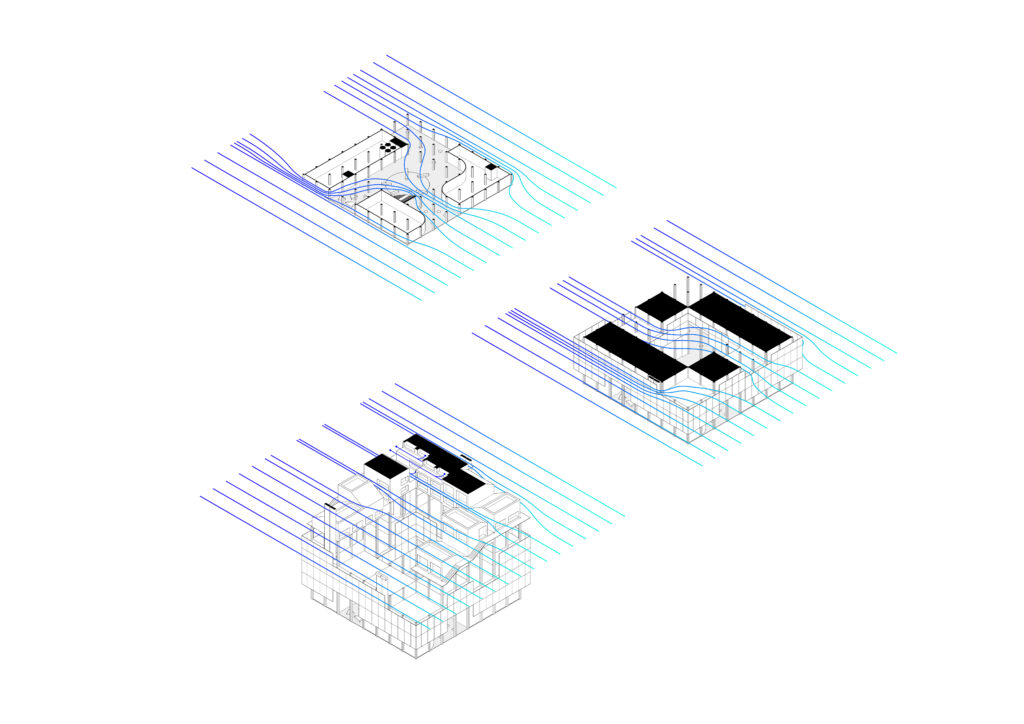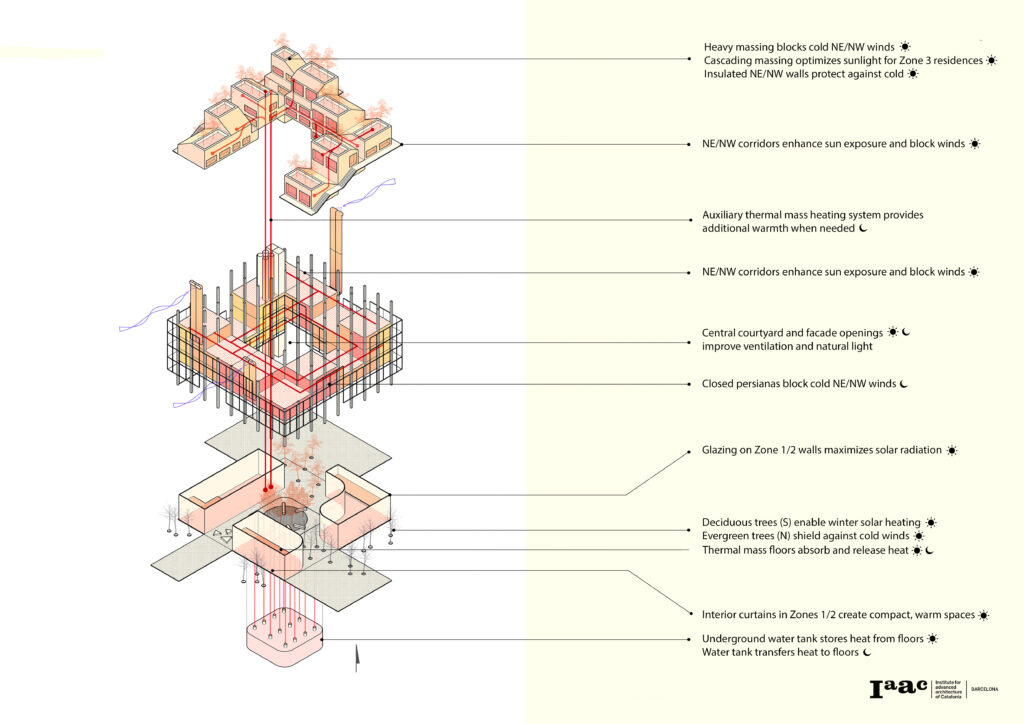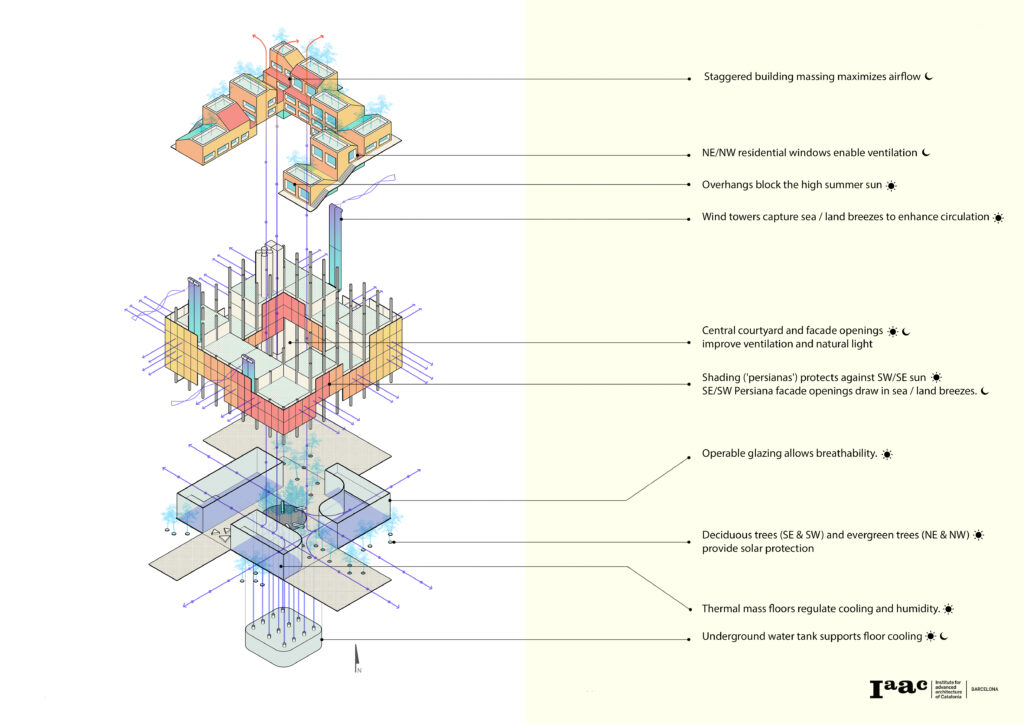N.E.S.T.: A Network for Ecological and Sustainable Timber Research
We were tasked with designing a Timber Research Center (+Residential units for researchers and visiting academics, designed for comfort and collaboration +shared amenities to foster a sense of community) A research and innovation facility dedicated to developing advanced timber products and technologies, with high-tech laboratories, testing areas, and collaborative workspaces.
Site: Industrial Park – San Adriá del Besós (Barcelona)
Climate: MediterraneanSite 5: 40×40: 1.600 m2 – flat terrain
FAR: 5.00 m2/m2
8.000m2 total built surface
We began by conducting a Climate Analysis:
CLIMATE
Barcelona’s climate is defined by hot, dry summers and mild, wet winters, with temperatures often exceeding 30°C in the summer and averaging around 10°C during winter months. This climate is shaped by winds funneled through gaps in surrounding mountain ranges, which contribute to high evaporation rates in the summer, particularly under the influence of desert-originating winds. These winds interact with the Mediterranean Sea, increasing surface water salinity and driving the characteristic dry conditions. Winters bring the majority of the region’s rainfall, often funneled through the same wind gaps.

FLORA
The Mediterranean flora has evolved to cope with the harsh climatic conditions, which include long dry periods, nutrient-poor soils, and frequent fires. Vegetation, typically consisting of dense scrubland, includes drought-adapted species like broad-leaved evergreen shrubs and small trees. Many plants feature sclerophyllous leaves to minimize water loss, while others have fire-resistant bark to survive frequent wildfires. Some species store moisture in their tissues to insulate against heat and dehydration, while others contain flammable essential oils but can readily resprout after fire events. Agricultural practices in the region have focused on cultivating drought-tolerant crops like olives, grapes, and wheat, which are well-suited to the seasonal water scarcity and nutrient-poor soils.

MICROCLIMATE
The microclimate of Sant Adrià de Besos is shaped by several factors, including its coastal location, dense urban fabric, and the Besos River. The area experiences a prominent Urban Heat Island (UHI) effect due to the concentration of buildings, narrow streets, and limited green spaces. Urban materials like concrete and asphalt absorb heat during the day and slowly re- lease it at night, causing elevated temperatures, particularly in the summer. The lack of vegetation further exacerbates this heat retention, as there is little natural cooling through processes like evapotranspiration.
Rainfall in the region is moderate, averaging 600-700 mm annually, with the heaviest rainfall occurring in the autumn and spring. These seasonal rains often come in the form of intense showers, which can result in localized flooding, especially near the Besos River. The river also plays a significant role in the local microclimate by contributing to increased humidity, particularly during the cooler months when the river’s waters are colder than the surrounding air. This added moisture can make summer conditions feel warmer and more uncomfortable, while also moderating temperatures slightly in the winter.
Wind patterns in Sant Adrià de Besos are influenced by both its coastal position and urban structure. Sea breezes, which bring cool air from the sea, help moderate temperatures during the day, especially in summer. However, the dense urban fabric of narrow streets and buildings blocks the full effect of these cooling breezes. At night, land breezes occur as the land cools faster than the sea, bringing cooler air toward the coast. However, these breezes are weak and provide limited relief. Overall, the micro-climate of Sant Adrià de Besos is a mix of natural and urban influences, with challenges like the UHI effect, flooding, and humidity, which could be mitigated through better green spaces and stormwater management.




Passive cooling (e.g., shading, evaporative cooling) can complement ventilation to extend comfort hours
In winter, Barcelona’s psychrometric chart shows no naturally comfortable hours, requiring active heating to achieve thermal comfort due to cold and dry conditions. In summer, 54% of the day is naturally comfortable, with adaptive ventilation effectively improving comfort, though additional shading or cooling could mitigate peak heat discomfort. Seasonal design strategies should focus on heating in winter and passive cooling with ventilation in summer.


This signifies the need for shaded, insulated spaces in summer to block high sun angles and solar gain in winter to capture low sun
angles, optimizing comfort in Mediterranean climatic design.





